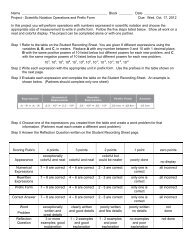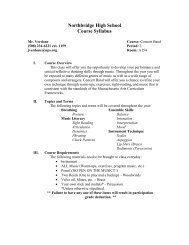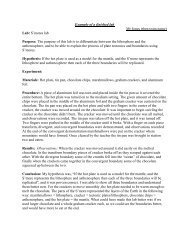Cyberbullying Fact Sheet
Cyberbullying Fact Sheet
Cyberbullying Fact Sheet
You also want an ePaper? Increase the reach of your titles
YUMPU automatically turns print PDFs into web optimized ePapers that Google loves.
m<br />
Help kids avoid cyberbullying<br />
Encourage children to make friends and to look out<br />
for each other. Cyberbullies are less likely to target those<br />
whom they perceive to have a strong network of friends,<br />
and usually stop when a victim’s friends rally around<br />
him or her.<br />
Talk with kids about cyberbullying. Ask your children what<br />
they are doing online–who they are meeting, what sites they<br />
visit, what games they play, and what they talk about. What<br />
may have started as a simple argument with one friend can<br />
slide into repeated online assaults with others joining in.<br />
Ask children to report bullying to you. Promise to take<br />
action on their behalf, and reassure them that you won’t<br />
curtail their phone, gaming, or computer privileges.<br />
Look for signs of online bullying–for example, getting<br />
upset when online or texting or talking on the phone, or<br />
a reluctance to go to school or after-school activities.<br />
Don’t tolerate cyberbullying. Let your children know<br />
they should never, under any circumstances, bully<br />
someone. Make the consequences clear.<br />
Keep passwords a secret. Urge kids not to share<br />
passwords or other information that could be used to bully<br />
them, and not to loan their phones or laptop computers.<br />
Turn on safety features available in most programs<br />
and services such as those in Windows ® 7, Xbox LIVE ® ,<br />
and the Zune ® digital media player. (Get details for<br />
Microsoft products at microsoft.com/protect/<br />
tools/childsafety/compare.aspx.)<br />
What to do if someone is<br />
cyberbullying your child<br />
Children need to know that you will give positive, active,<br />
and predictable support.<br />
Act immediately. Don’t wait to see if the abuse will stop.<br />
If you feel that your child is physically at risk, call the<br />
police at once.<br />
Acknowledge the pain. It’s important for kids to hear<br />
you affi rm that what happened wasn’t fair or right. Make<br />
sure they understand:<br />
That “only weaklings tattle” is a myth. Those who get<br />
help are the ones who are not willing to be bullied.<br />
They are not at fault. The bully is not attacking because<br />
of some flaw–“I’m fat, a nerd, wear glasses…” The bully is<br />
simply justifying his or her actions.<br />
Tell your kids not to respond or retaliate because<br />
bullies are looking for a reaction. Don’t answer a bully’s<br />
calls, or reply to (or even read) text messages or online<br />
attacks. Do save the material in case the authorities need it.<br />
Block anyone whose behavior is inappropriate or<br />
threatening in any way. Check with the service–social<br />
networking, IM, mobile phone–to fi nd out how.<br />
Report the problem. Every effort should be made to<br />
hold the cyberbully accountable.<br />
If the bully is a student, consider reporting it to the school.<br />
Report bullying to the website or company where the<br />
abuse occurred. For example, in Microsoft ® services or<br />
software, look for a Report Abuse link or contact us at<br />
www.microsoft.com/reportabuse.<br />
Content contributor<br />
© 2010 Microsoft. This material is provided for informational purposes only.<br />
Microsoft makes no warranties, express or implied.<br />
1110 Part No. 098-109733







![Poetry Book Report [created by Mrs. Kucinskas]](https://img.yumpu.com/42940863/1/190x245/poetry-book-report-created-by-mrs-kucinskas.jpg?quality=85)








